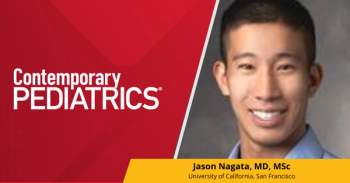
How to support the breastfeeding parent
At the 2023 Pediatric Academic Societies Meeting, presenters provided the benefits of breastfeeding, along with some useful tips for lactation and how to best help your breastfeeding patients.
There are multiple tools that pediatricians can equip themselves with when to comes to supporting breastfeeding, according to a session presented at the 2023 Pediatric Academic Societies meeting held in Washington, DC.
Jennifer Zarit, MD, IBCLC, assistant professor at UPMC, Children’s Hospital of Pittsburgh; Patricia Staley, MD, assistant professor of pediatrics at UPMC Children's Hospital of Pittsburgh; Kristin Hannibal, MD, clinical director of primary care center at the University of Pittsburgh School of Medicine; and Mavis Britwum, DO, pediatric resident at UPMC Children's Hospital, sought to explain the process of breastmilk production, provide the benefits of breastfeeding, and know how to respond to questions about lactation in their presentation. They also aimed to explain hand expression of breastmilk to new parents and show the ideal latch and positioning of an infant for maternal comfort and optimal breastmilk transfer.
Zarit, Staley, Hannibal, and Britum began their presentation with a conversation about incorporating inclusive language when it comes to discussing breastfeeding. This includes the different terminology families prefer to use instead of the term “breastfeeding, such as “chestfeeding.” Additionally, the presenters suggested using the term “parent or “person who gave birth” instead of "mother" if the patient requests it.
They also touched on some of the benefits of breastfeeding mentioned by the presenters included immune system development and has shown a decrease in lower respiratory tract infections, acute otitis media, obesity, and diarrhea. There are also maternal benefits to breastfeeding such as a decrease in the risk of developing type 2 diabetes, hypertension, as well as ovarian and breast cancer.
Despite these benefits to both mother and child, there are some situations when parents should avoid breastfeeding, including when maternal infections are present (HIV, herpes on the breast, and active tuberculosis), inborn errors of metabolism (such as galactosemia), and maternal exposure to drugs of abuse, medications, and environmental agents, according to the presentation. However, they mentioned that it is OK to breastfeed if the mother smokes, ingests CT/MRI contract, or is on opioid maintenance.
The presenters stressed that any amount of breastmilk is beneficial (however the range of benefits is dose-dependent), and while it is ideal that every baby be given 100% breastmilk, any breastmilk is considered good breastmilk. “Any amount of breastmilk or any time spent breastfeeding will be beneficial for the mother and baby,” said Zarit, Staley, Hannibal, and Britum.
Additionally, they provided 2022 updates to the American Academy of Pediatrics Policy Statement “Breastfeeding and the use of human milk.” Some of these updates include promoting exclusive breastfeeding for approximately 6 months of age as well as the continuation of breastfeeding along with the introduction of complementary foods after approximately 6 months. As for patients 2 years and older, the update recommends breastfeeding can continue if it is both desired by the mother and child.
The priority of the presentation was spent providing different case scenarios to the audience regarding what clinicians can do when a patient is breastfeeding, including:
- Know the benefits
- Know what to expect
- Teach hand expression
- Encourage “safe” skin to skin
- Know the basics of latch
Use Lactmed
The workshop presentation concluded with attendees partaking in a lactation simulation to provide examples of how to help patients breastfeed.
Reference:
Zarit J, Staley P, Hannibal K, Britwum M. Skills to support breastfeeding through simulation. Presented at: Pediatric Academic Societies Meeting, April 27-May 1, Washington, DC.
Newsletter
Access practical, evidence-based guidance to support better care for our youngest patients. Join our email list for the latest clinical updates.

![Jodi Gilman, PhD, on cumulative prenatal adversity linked to adolescent mental health risk Document Jodi Gilman, PhD, on cumulative prenatal adversity linked to adolescent mental health risk Live? Do you want this document to be visible online? Scheduled Publishing Exclude From Home Page Do you want this document to be excluded from home page? Exclude From Infinite Scroll Do you want this document to be excluded from infinite scroll? Disable Related Content Remove related content from bottom of article. Password Protection? Do you want this gate this document? (If so, switch this on, set 'Live?' status on and specify password below.) Hide Comments [Experiment] Comments are visible by default. To hide them for this article toggle this switch to the on position. Show Social Share Buttons? Do you want this document to have the social share icons? Healthcare Professional Check Is Gated [DEV Only]Do you want to require login to view this? Password Password required to pass the gating above. Title Jodi Gilman, PhD, on cumulative prenatal adversity linked to adolescent mental health risk URL Unique identifier for this document. (Do not change after publishing) jodi-gilman-phd-on-cumulative-prenatal-adversity-linked-to-adolescent-mental-health-risk Canonical URL Canonical URL for this document. Publish Date Documents are usually sorted DESC using this field. NOTE: latency may cause article to publish a few minutes ahead of prepared time 2026-01-19 11:52 Updated On Add an updated date if the article has been updated after the initial publish date. e.g. 2026-01-19 11:50 Article Type News Display Label Author Jodi Gilman, Phd > Gilman, Jodi Author Fact Check Assign authors who fact checked the article. Morgan Ebert, Managing Editor > Ebert, Morgan Content Category Articles Content Placement News > Mental, Behavioral and Development Health > Clinical AD Targeting Group Put the value only when the document group is sold and require targeting enforcement. Type to search Document Group Mapping Now you can assign multiple document group to an article. No items Content Group Assign a content group to this document for ad targeting. Type to search Issue Association Please choose an issue to associate this document Type to search Issue Section Please choose a section/department head if it exists Type to search Filter Please choose a filter if required Type to search Page Number Keywords (SEO) Enter tag and press ENTER… Display summary on top of article? Do you want display summary on top of article? Summary Description for Google and other search engines; AI generated summary currently not supporting videos. Cumulative prenatal adversities were linked to higher adolescent mental health risk, highlighting the importance of prenatal history and early clinical monitoring. Abstract Body *********************************************************************************************************** Please include at least one image/figure in the article body for SEO and compliance purposes ***********************************************************************************************************](https://cdn.sanity.io/images/0vv8moc6/contpeds/e6097cb5e6d6c028c0d4e9efd069e69fdab6d00b-1200x628.png?w=350&fit=crop&auto=format)






